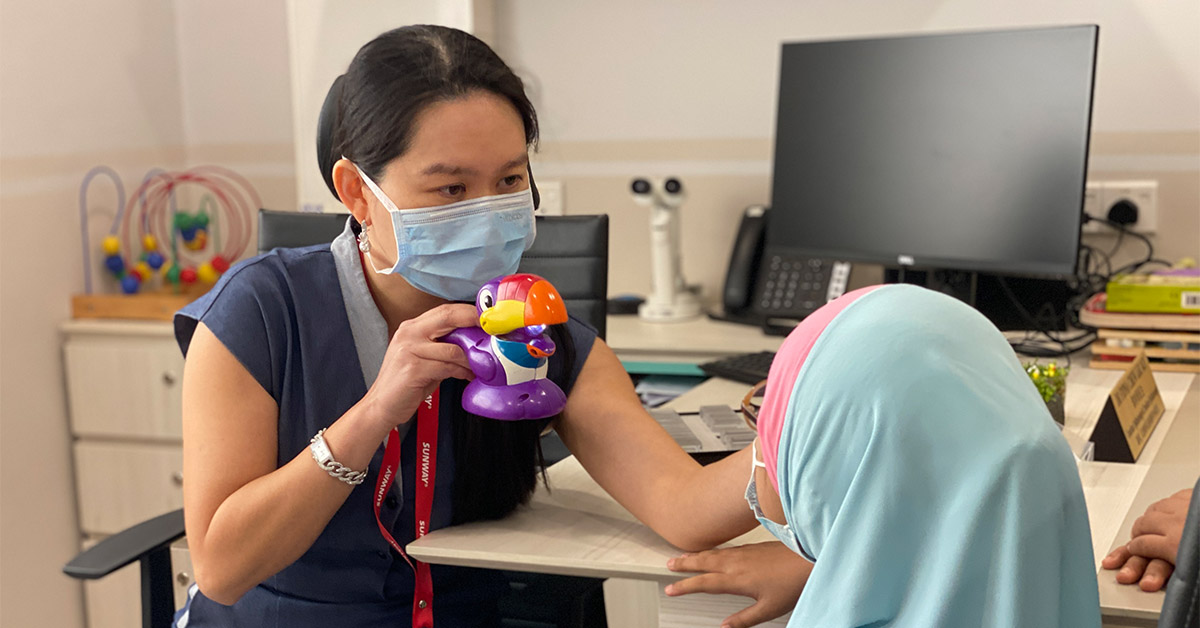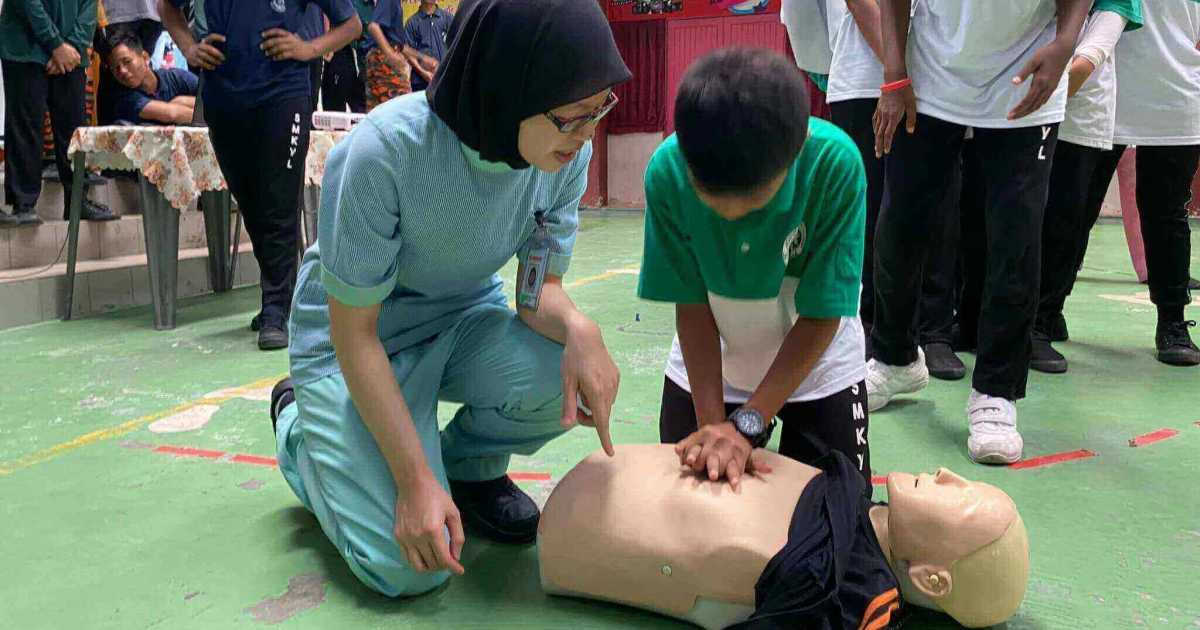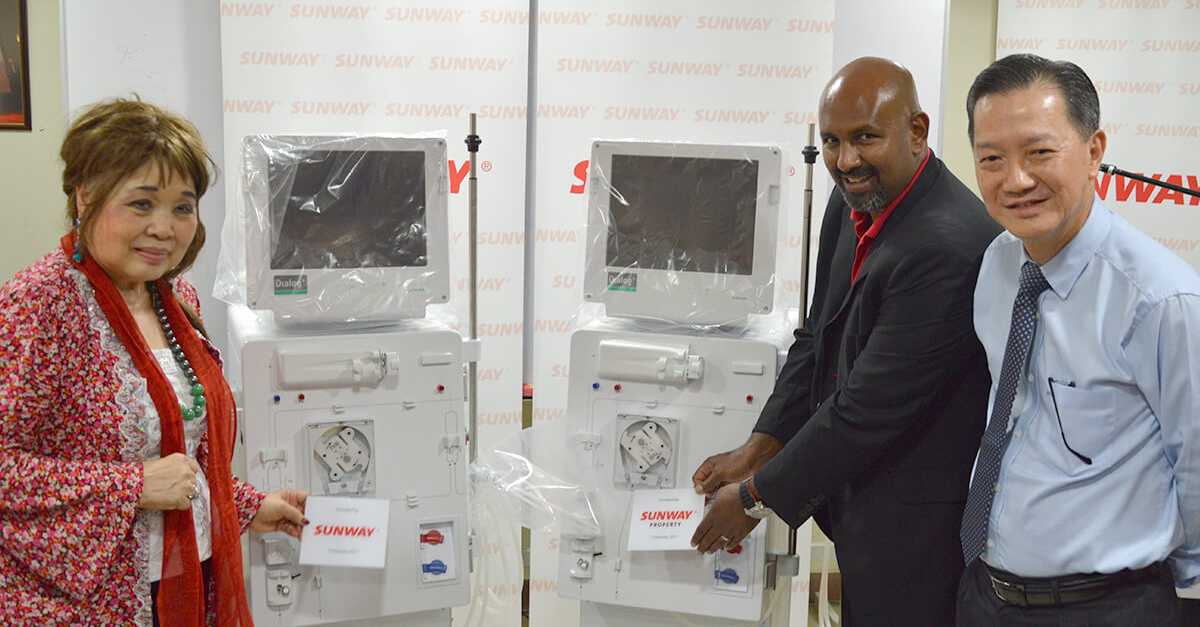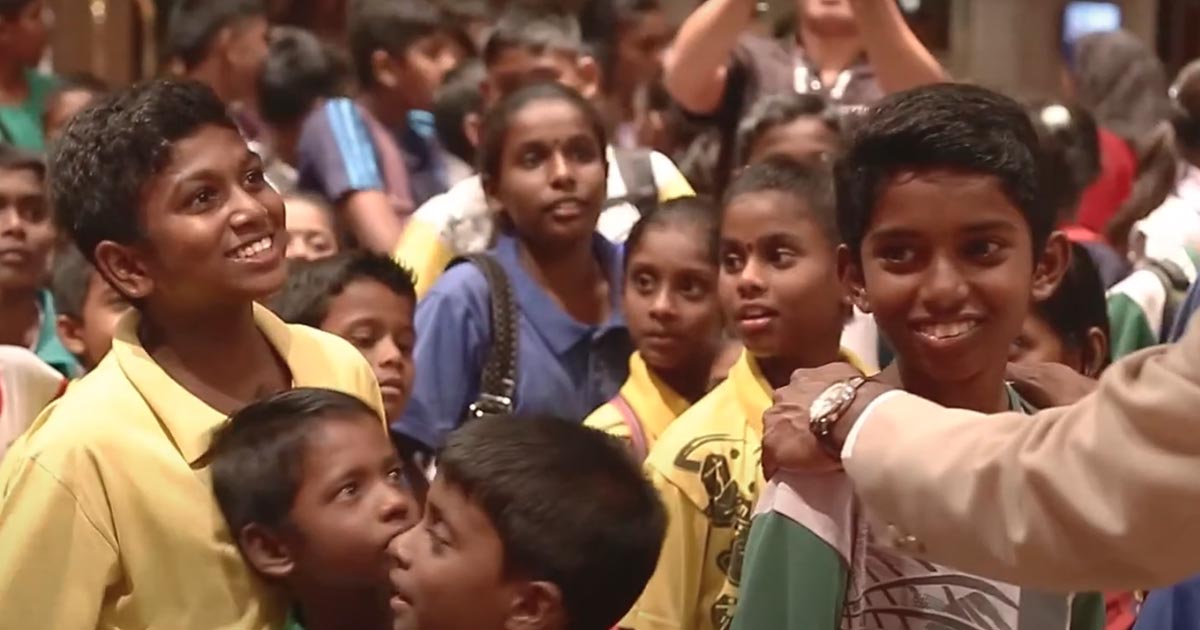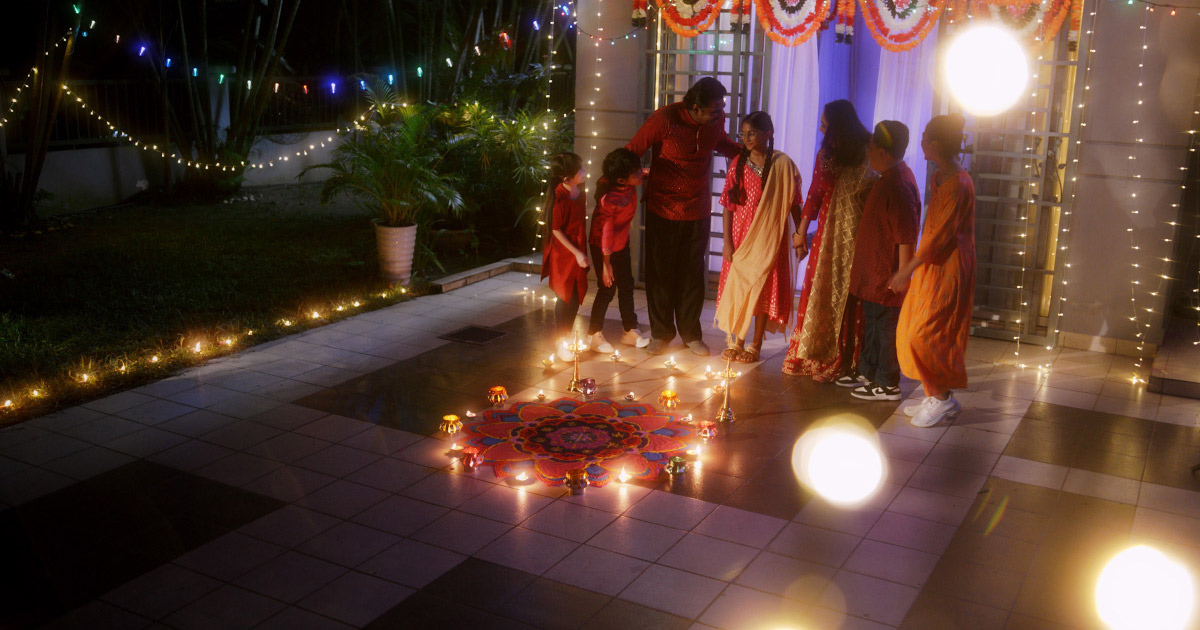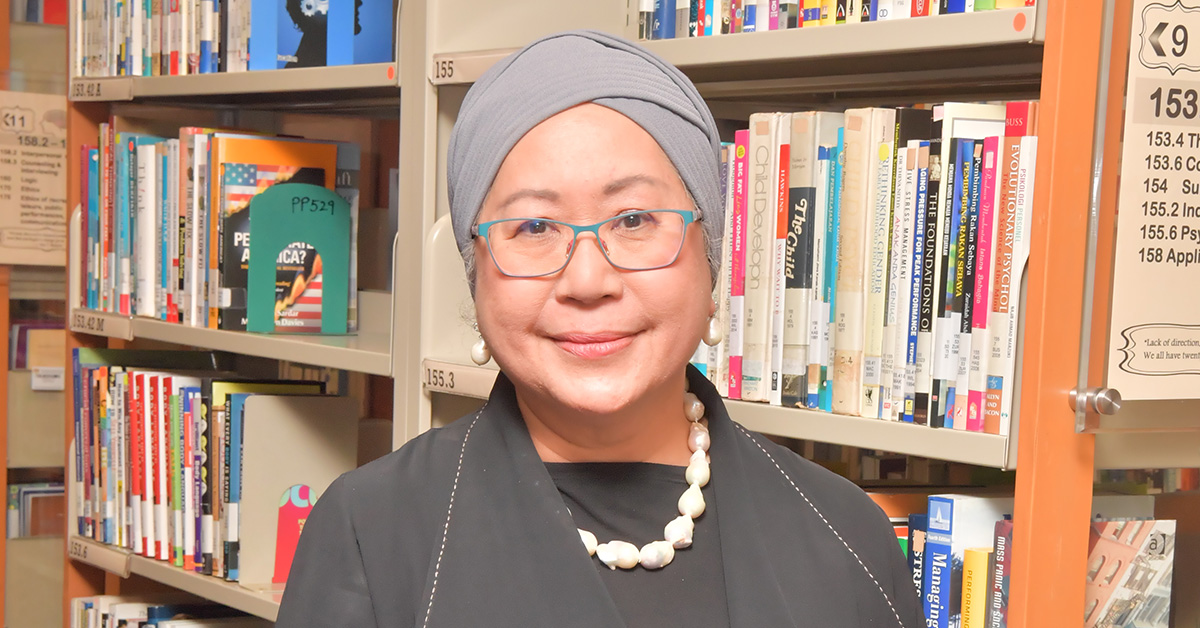Squint Treatment for Children: A Life-Changing Experience
-
Nine-year-old Mia Syuhada Sabdani was diagnosed with squint – an eye condition that affected her vision, studies and life dating all the way back to when she was just six.
-
Through our CSR initiative – A Little Wish, For Your Little One, Sunway Medical Centre Velocity (SMCV) wanted to change the life of Mia for the better.
Sight is one of the most important senses for any person, more so for a child. The ability to see allows the child to explore, connect and learn safely in different surroundings. Besides being blind, there are other eye conditions which can seriously affect a child’s ability to observe and understand the world around them if left untreated, thus interfering with their physical and mental development.
One of these common eye conditions is strabismus, or squint (known in Malay as mata juling), a condition where both eyes do not look in the same direction. There are many types of squint ranging from esotropia (eye turned inwards), exotropia (eye turned outwards), vertical squints such as hypertropia (eye turned upwards), hypotropia (eye turned downwards) and even rotational squints (eyes are rotated). This condition is most commonly found in children, but can occur at any age from babies up to the elderly. Squint is caused by various factors such as muscle weakness, medical conditions such as stroke or even external impact from accidents.
Dr Fiona Chew Lee Min, Consultant Ophthalmologist and Paediatric Ophthalmologist at Sunway Medical Centre Velocity (SMCV) explains that the most common cause of squint is the inability of the eye muscles to pull the eyeball equally, causing them to be too tight or too loose. This then leads to the eye being pulled in one direction or the other, thus creating a misalignment of the eyeballs. Dr Fiona elaborates that there are three ways to determine if a person has a squint.
“We start by observing if the patient’s eyes are straight – if they are not, then the person has a squint. Secondly, by observing if the patient’s head turns left or right naturally or abnormally while walking. And thirdly, we take a close look at the person’s face. If one side is clearly more developed than the other, it is also a sign of squint,” said Dr. Fiona.
A heartwarming tale of Mia
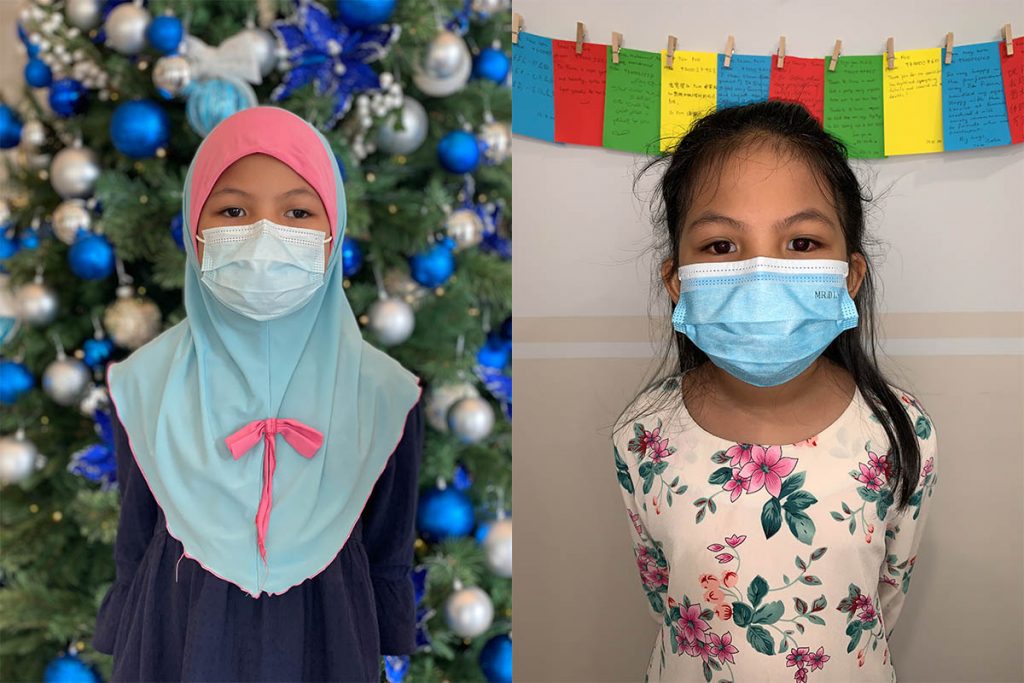
Before and after Mia’s journey
The parents of one of Dr Fiona’s patients, 9-year-old Mia Syuhada binti Sabdani can attest to the life-changing effects of squint surgery. In December 2020, SMCV ran a CSR project titled ‘A Little Wish, For Your Little One’ to fulfil a child’s surgical need. Mia’s mother, Ramadiah Binti Abd Rahman, took the opportunity to seek help for her daughter, who had been experiencing exotropia squint for several years. The plight of her family’s struggles, both mentally and financially touched the hearts of all at SMCV prompting them to offer the much needed surgery for Mia.
“We noticed the squint in Mia when she was about six years old when she started schooling. Unfortunately, she was teased by her peers in school, found it difficult to concentrate and thus could not pick up on her lessons in the classroom. Now that she’s a little older, we realised we needed to correct this issue,” Mia’s mother recalls.
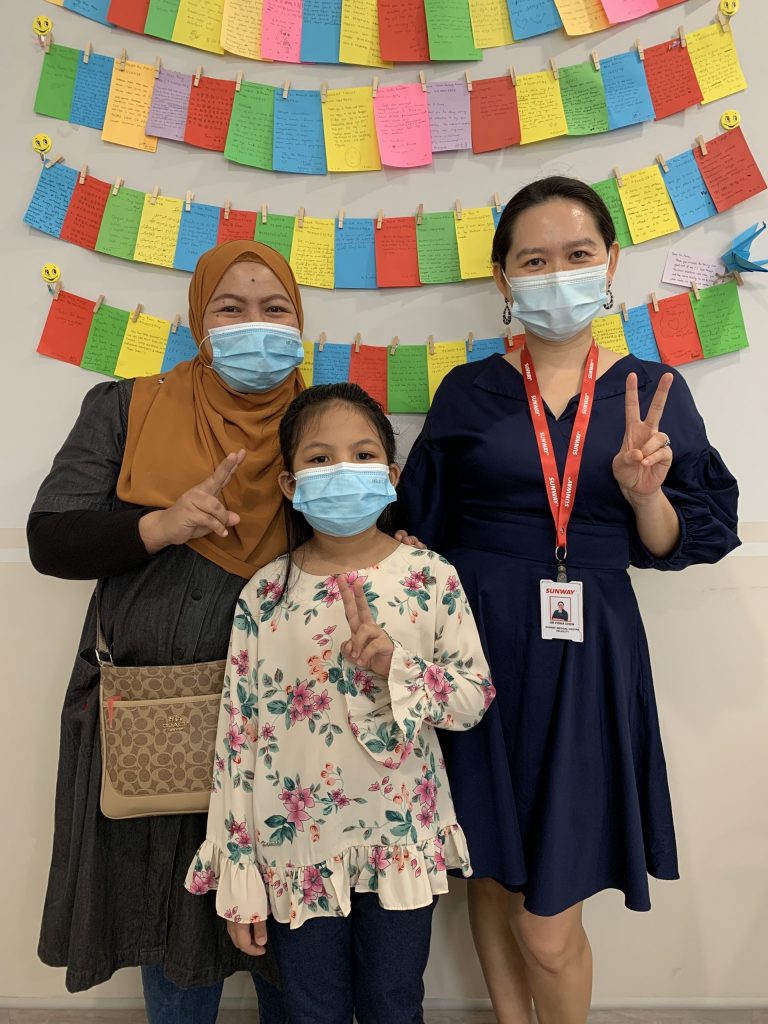
Ramadiah noted that as a parent, she was mostly concerned about how the surgery would affect the child, and if there would be any major side effects that would interfere with her eyesight. However, Dr Fiona’s detailed analysis and explanation about the procedure provided much relieve and comfort for the family.
“After the surgery, there was a marked improvement in Mia. she is now able to focus on learning, reading and writing, and she is no longer taunted by her schoolmates, which in return has helped improve her self-esteem. We are very satisfied with the results of the surgery and are so glad we were able to help our child,” Ramadiah adds.
A background on squint

Previously, squint was thought to be untreatable after childhood. However, modern scientific research and surgical advancements have shown that the human brain is elastic and adaptable, showing that even older children and adults all the way to the elderly with squint can be treated. Dr Fiona advises patients that the most important thing is to seek treatment for squint once it is noticeable or disrupts normal visual function.
“Squint treatment actually changes a person’s life. Children with squint have reduced three-dimensional vision. This means they are unable to judge distances. Also, their visual field is reduced, and they may have delayed developmental milestones. They are more likely to trip over things, face difficulty going down the stairs or crossing the road and also have problems studying due to reduced vision and poor concentration.
Due to abnormal appearance, these children may also develop depression, reduced self-esteem as well as become anti-social. Later in life, this will also affect their career prospects. If treated properly, a patient with squint will have improved three-dimensional vision, enhanced concentration and better vision. Career prospects will also improve as they fit in like normal individuals,” stresses Dr. Fiona.
Surgery is only one of the many treatments that patients with squint can opt for to correct their condition. Dr Fiona notes that there are various lifestyle modifications that can be carried out to treat it as well.
“Reducing time on electronic gadgets, spending more time outdoors, wearing special spectacles or carrying out regular special exercises can also help improve squint control. Squint can appear at any age from the young all the way to the elderly. It does not matter when the squint appears, as many squints can be treated. Do not be afraid to see your eye doctor – the sooner you get it treated, the better the results,” she says.
Sunway’s bid to build a healthier nation is inspired by the healthcare pillar under its #SunwayforGood banner, not only leading in long-term sustainable projects to benefit the underserved through our corporate responsibility initiatives, but also to transform one person’s life for better.













